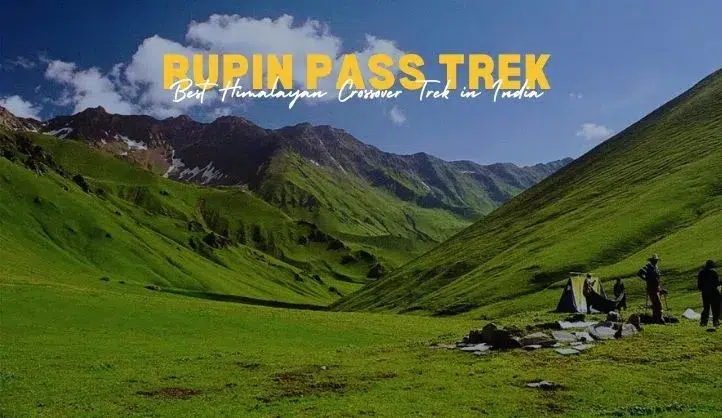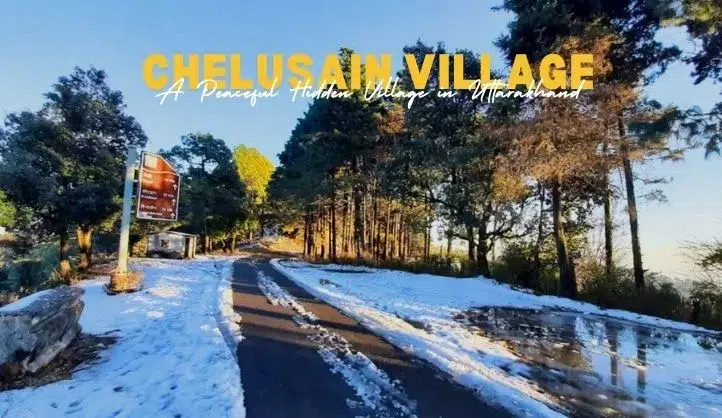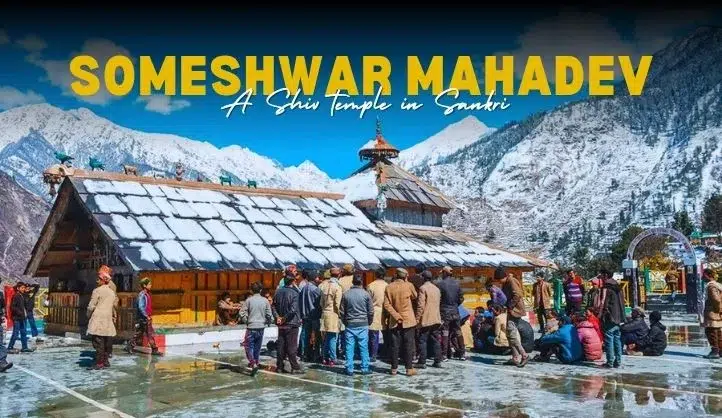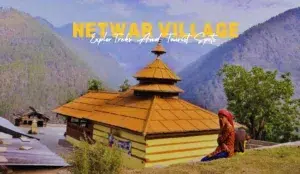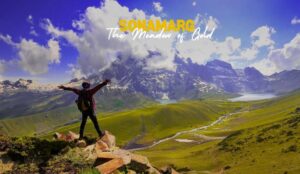“Unlock Chopta’s Beauty 🏞️✨ Top Travel Tips for Your Ultimate Adventure! Plan Wisely for a Memorable Journey. #ChoptaTravelTips”
If you’re seeking a tranquil retreat nestled amidst the majestic Himalayas, Chopta is the destination for you. Often referred to as the “Mini Switzerland of India,” this enchanting hill station is a haven for nature lovers and adventure enthusiasts alike. In this article, we will delve into the captivating beauty and attractions of Chopta, uncovering why it has become a sought-after travel destination.
Nestled at an altitude of approximately 2,680 meters in the Rudraprayag district of Uttarakhand, Chopta is a serene paradise that offers a respite from the hustle and bustle of city life.
With its untouched natural beauty, captivating trekking trails, and a sense of tranquility that envelops the entire region, Chopta has gained a reputation as a must-visit destination.
Getting to Chopta
Chopta is a beautiful hill station located in the Indian state of Uttarakhand. It is known for its picturesque landscapes and as the base for trekking to Tungnath, one of the highest Shiva temples in the world. To reach Chopta, you can follow these general directions:
By Air: The nearest major airport to Chopta is the Jolly Grant Airport in Dehradun, which is approximately 220 kilometers away. From the airport, you can hire a taxi or take a bus to reach Chopta.
By Train: The closest railway station to Chopta is Rishikesh, which is around 200 kilometers away. From Rishikesh, you can either hire a taxi or take a bus to reach Chopta. Another option is to take a train to Haridwar, which is also well-connected to various cities, and then proceed to Chopta via road.
By Road: Chopta is well-connected by road, and you can reach there via a scenic drive. The journey can be undertaken from major cities like Delhi, Dehradun, and Haridwar. You can follow this route:
- Delhi to Rishikesh/Haridwar: Start by driving or taking a bus from Delhi to either Rishikesh or Haridwar.
- Rishikesh/Haridwar to Chopta: From Rishikesh or Haridwar, you can hire a taxi or take a bus to reach Chopta. The road journey takes you through picturesque landscapes and winding mountain roads.
It’s advisable to check the weather and road conditions before starting your journey, especially during the winter months when the region experiences heavy snowfall. Additionally, make sure to carry essentials like warm clothing, food, and water, as amenities might be limited in certain areas along the way.
Keep in mind that travel information can change, so it’s recommended to verify the routes and transportation options before you start your trip.
Untouched Natural Beauty
Flora and Fauna
Chopta boasts a diverse range of flora and fauna, making it a paradise for nature enthusiasts. The region is home to a variety of bird species, including the vibrant Himalayan Monal, and animals like the musk deer and barking deer. The surrounding forests are a mix of oak, pine, and rhododendron trees.
Picturesque Meadows
The meadows of Chopta, such as the famous Bugyal Meadows, are a sight to behold. During spring, these meadows burst into a riot of colors, with vibrant wildflowers blanketing the landscape. The tranquility of these meadows is perfect for introspection and connecting with nature.
Trekking and Adventure
Tungnath Temple Trek
One of the highlights of visiting Chopta is the trek to Tungnath Temple, the highest Shiva temple in the world. The trek is moderate and offers breathtaking views of the Himalayas at every turn. The temple itself holds immense religious and historical significance.
Chandrashila Summit Trek
For the more adventurous souls, the Chandrashila Summit Trek is a must. The summit offers panoramic views of several snow-capped peaks, and the trek is particularly famous for its spectacular sunrise and sunset views.
Tranquil Accommodation Options
Chopta offers a range of tranquil accommodation options that allow you to immerse yourself in the serene beauty of the Himalayas. Whether you’re seeking luxury, comfort, or a more rustic experience, you’ll find places to stay that cater to different preferences. Here are some accommodation options to consider:
- Resorts and Eco-Lodges:
- There are a few resorts and eco-lodges nestled in the hills around Chopta that offer comfortable rooms, modern amenities, and stunning views.
- These options often provide a balance between luxury and nature, allowing you to unwind in a serene environment.
- Cottages and Guesthouses:
- Chopta has charming cottages and guesthouses that provide a cozy and intimate atmosphere.
- You’ll often find local touches in the decor and architecture, adding to the authenticity of your stay.
- Homestays:
- Experience the warmth of local hospitality by staying with a local family in a homestay.
- This option not only provides comfortable lodging but also allows you to connect with the local culture and way of life.
- Tented Camps:
- Some areas in Chopta offer tented camps that provide a closer connection to nature.
- These camps can range from basic to more luxurious, offering a unique camping experience without compromising on comfort.
- Budget Accommodations:
- If you’re a budget traveler, there are budget-friendly accommodations available, including basic guesthouses and lodges.
- While amenities might be simpler, they still offer a comfortable place to rest after a day of exploration.
- Yoga Retreats and Wellness Centers:
- Chopta’s tranquil environment makes it a great location for yoga retreats and wellness centers.
- These options often combine comfortable accommodations with yoga and wellness programs to rejuvenate your body and mind.
- Local Villages:
- In nearby villages, you might find quaint accommodations that offer a rustic and authentic experience.
- Staying in a village can give you insights into local life and traditions.
Seasonal Charms
Chopta offers a myriad of seasonal charms that vary throughout the year, creating a dynamic and ever-changing landscape that captures the hearts of travelers. Each season brings its own unique beauty and experiences. Here’s a glimpse of the seasonal charms of Chopta:
Spring: As winter recedes, Chopta awakens with the arrival of spring, painting the meadows with a vibrant burst of colors. The air is crisp, and the blooming flowers create a surreal atmosphere. Rhododendrons, primroses, and a variety of wildflowers adorn the hillsides, transforming the landscape into a picturesque paradise. The gentle warmth of the sun makes it an ideal time for trekking, birdwatching, and soaking in the natural beauty.
Summer: Summer in Chopta is a season of abundance. The meadows are lush green, and the clear skies offer unobstructed views of the towering Himalayan peaks. It’s the perfect time for trekking to Tungnath and Chandrashila, as well as exploring the surrounding trails. The moderate temperatures provide a pleasant environment for outdoor activities, making it a popular season for travelers seeking adventure and tranquility.
Monsoon: During the monsoon season, Chopta transforms into a mystical wonderland. The rain showers breathe life into the forests and meadows, creating an enchanting atmosphere. The mist-covered landscapes, glistening leaves, and the fragrance of wet earth make for a surreal experience. While the weather can be unpredictable, the monsoon season offers a quieter and more intimate connection with nature, allowing you to witness the region’s rejuvenation.
Autumn: Autumn brings a sense of tranquility and serenity to Chopta. The clear skies return, offering panoramic views of the surrounding mountains. The foliage takes on hues of red, orange, and gold, creating a captivating tapestry of colors. The cooler temperatures make it an ideal time for outdoor activities like trekking and photography. The peaceful ambiance of autumn provides a perfect setting for reflection and exploration.
Winter: Winter in Chopta is a magical time when the landscape is transformed by a blanket of snow. The meadows and trees are covered in white, and the Himalayan peaks stand majestically against the azure sky. It’s a haven for winter sports enthusiasts, offering opportunities for snow trekking, skiing, and snowboarding. The cozy warmth of accommodations and the tranquility of the snow-covered surroundings create a unique and enchanting experience.
Chopta’s seasonal charms offer something for every type of traveler, whether you’re seeking vibrant colors, serene landscapes, or snow-covered adventures. Exploring this region throughout the year allows you to witness its ever-changing beauty and connect with nature in a profound way.
Local Cuisine and Culture
Exploring the local cuisine and culture in Chopta can be a truly enriching experience, allowing you to connect with the region’s heritage and flavors. Here’s a glimpse into the culinary delights and cultural aspects you can discover:
Local Cuisine: Chopta’s cuisine reflects the simplicity and traditions of the Himalayan region. You’ll find hearty and wholesome meals that provide sustenance in the challenging mountain environment. Some traditional dishes to try include:
- Dal Bhat: A staple dish, consisting of lentil soup (dal) and rice (bhat), often served with vegetables and sometimes accompanied by pickles or chutneys.
- Aloo Ke Gutke: Spiced and sautéed potatoes with local herbs and spices, offering a burst of flavors.
- Siddu: A steamed bread made from wheat flour and stuffed with a mixture of crushed cereals, commonly served with ghee or chutney.
- Thukpa: A hearty noodle soup that combines vegetables, noodles, and sometimes meat, offering warmth and comfort.
- Momos: Dumplings filled with vegetables or meat, served with a spicy dipping sauce.
- Local Greens: Chopta’s region offers a variety of edible greens, often used in traditional dishes, giving a unique and authentic taste.
- Local Dairy Products: You might come across fresh dairy products like curd (yogurt) and paneer (cottage cheese), adding a touch of creaminess to the meals.
Cultural Aspects: Chopta and its surroundings are steeped in cultural richness, with traditions influenced by the local communities and their connection to the mountains:
- Local Festivals: Participate in local festivals like Makar Sankranti and Phool Dei, where you can witness traditional songs, dances, and rituals.
- Attire: Observe the traditional clothing worn by the locals, which often includes vibrant colors and intricate embroidery.
- Local Markets: Explore local markets to find handmade crafts, textiles, and souvenirs that showcase the region’s artistic heritage.
- Temples and Religious Practices: Chopta is often visited by pilgrims due to its proximity to sacred sites like Tungnath and Madhyamaheshwar temples. Observe the rituals and practices that hold deep spiritual significance.
- Language and Music: Engage with the local communities to learn about their language, songs, and folk music that convey their stories and way of life.
- Hospitality: Experience the warm hospitality of the people, who are known for their welcoming nature and willingness to share their culture with visitors.
- Traditional Architecture: Observe the traditional architectural styles of the region’s homes and buildings, often constructed to withstand the harsh mountain environment.
Embrace these cultural aspects and savor the local flavors to truly immerse yourself in the authenticity of Chopta. Engaging with the local community and being respectful of their traditions will make your experience even more meaningful
Chopta Travel Tips
Photography Paradise
Chopta is a photography paradise, offering breathtaking landscapes, stunning vistas, and unique natural beauty that can captivate the lens of any photographer. Whether you’re a professional or an amateur, here’s why Chopta is a haven for photography:
- Majestic Mountainscapes:
- Capture the towering Himalayan peaks as they stand against the backdrop of clear blue skies or draped in mist.
- The changing light throughout the day offers endless opportunities for capturing dramatic mountain landscapes.
- Enchanting Meadows:
- Chopta’s lush green meadows, especially in summer, provide a picturesque setting for landscape photography.
- The vibrant flowers and grasses create a colorful canvas for your shots.
- Golden Sunrise and Sunsets:
- The crisp mountain air and unobstructed views make for spectacular sunrise and sunset photography.
- Watch as the sun casts a warm glow on the peaks and meadows, creating stunning silhouettes.
- Reflections in Lakes:
- Lakes like Deoria Tal provide mirror-like reflections of the surrounding mountains, making for striking compositions.
- Snowy Wonderland:
- In winter, Chopta transforms into a snowy wonderland, offering opportunities for capturing the serene beauty of snow-covered landscapes.
- Flora and Fauna:
- Photograph the diverse range of flora, from rhododendrons to alpine flowers, against the natural backdrop.
- If you’re lucky, you might also spot wildlife like birds and musk deer.
- Astrophotography:
- The clear, pollution-free skies at Chopta make it a great spot for capturing the Milky Way and starry nights.
- Trekking and Adventure:
- Document your trekking experiences, capturing the journey, the people you meet, and the challenges you overcome.
- Cultural Experiences:
- Photograph local life, traditions, and architecture to document the cultural aspects of the region.
- Macro Photography:
- Get up close to capture intricate details of flowers, insects, and other small elements that make up the ecosystem.
Tips for Photographing in Chopta:
- Golden Hours: Make the most of the golden hours around sunrise and sunset for soft, warm light that enhances the landscapes.
- Wide and Telephoto Lenses: Carry a variety of lenses to capture both expansive vistas and detailed shots.
- Tripod: Use a sturdy tripod for steady shots, especially during low-light conditions or long exposures.
- Filters: Consider using polarizing filters to enhance colors and reduce glare, and ND filters for longer exposures.
- Weather Preparedness: Be ready for changing weather conditions, and protect your gear from rain and snow.
- Local Elements: Incorporate local elements like people, traditional attire, and architecture to add depth to your photography.
Preserving the Ecosystem
Preserving the ecosystem of Chopta and its surrounding areas is crucial for maintaining the natural beauty and biodiversity of this pristine region. Responsible and sustainable practices can ensure that future generations can also enjoy the wonders of this unique environment. Here are some ways to contribute to ecosystem preservation:
- Stay on Designated Paths:
- Stick to established trails and paths to avoid damaging fragile vegetation and causing erosion. Avoid creating new paths that can harm the ecosystem.
- Proper Waste Disposal:
- Carry reusable water bottles and containers to minimize plastic waste.
- Pack out all your trash and litter, leaving no trace behind.
- Respect Wildlife:
- Observe wildlife from a distance and avoid feeding them, as it can disrupt their natural behaviors.
- Refrain from making loud noises or sudden movements that could disturb animals.
- Use Biodegradable Products:
- If possible, use biodegradable soaps and toiletries to minimize water pollution in rivers and streams.
- Camp Responsibly:
- If camping, choose established camping sites and follow Leave No Trace principles.
- Use camp stoves instead of open fires to reduce the risk of wildfires and prevent damage to vegetation.
- Conserve Water:
- Use water sparingly, especially in areas where water resources are limited.
- Avoid contaminating water sources by not washing clothes or utensils directly in rivers or streams.
- Respect Local Culture:
- Learn about and respect the local customs, traditions, and beliefs to ensure that your actions are culturally sensitive.
- Support Eco-Friendly Initiatives:
- Choose accommodations and tour operators that prioritize sustainability and eco-friendly practices.
- Educate Yourself and Others:
- Educate yourself about the local ecosystem, wildlife, and conservation efforts.
- Share your knowledge with fellow travelers to promote responsible tourism.
- Limit Noise Pollution:
- Keep noise levels down, especially in natural areas, to maintain the tranquility of the environment and minimize disturbance to wildlife.
- Advocate for Conservation:
- Support local conservation organizations and initiatives working to protect the ecosystem.
- Raise awareness about the importance of preserving natural areas and encourage others to follow responsible practices.
- Report Irresponsible Behavior:
- If you witness any activities that are harmful to the ecosystem, report them to local authorities or relevant organizations.
Exploring Nearby Attractions
Certainly! Chopta is a picturesque destination nestled in the Himalayan region of Uttarakhand, India. It’s known for its serene beauty, lush landscapes, and stunning views of the surrounding mountains. If you’re looking to explore nearby attractions in Chopta, here are some recommendations:
- Tungnath Temple: Tungnath is one of the Panch Kedar temples and is famous for being the highest Shiva temple in the world. The trek to Tungnath is a must-do for spiritual seekers and nature enthusiasts. The trail offers breathtaking views of the Himalayas.
- Chandrashila Peak: This peak is often visited in conjunction with the Tungnath Temple trek. It’s a vantage point that provides panoramic views of the Himalayan ranges, including Nanda Devi, Trishul, and Chaukhamba peaks. The trek can be challenging but is incredibly rewarding.
- Deoria Tal: A pristine lake located about 3 km uphill from Sari village. The trek to Deoria Tal is relatively easy and offers a serene landscape. The lake reflects the surrounding peaks and offers a beautiful camping spot.
- Madhyamaheshwar Temple: This temple is part of the Panch Kedar pilgrimage and is dedicated to Lord Shiva. It’s a trek that combines spirituality and adventure, passing through scenic meadows and forests.
- Kanchula Korak Musk Deer Sanctuary: If you’re a wildlife enthusiast, this sanctuary is home to the elusive musk deer and other Himalayan fauna. The sanctuary provides an opportunity for nature walks and birdwatching.
- Ukhimath: This town serves as winter abode for Kedarnath deity and is known for its religious significance. The Omkareshwar Temple here is worth a visit.
- Kalimath: Another important religious site, Kalimath is dedicated to the goddess Kali. The trek to Kalimath offers glimpses of local culture and traditions.
- Rudranath Temple: This temple is also one of the Panch Kedar temples and requires a trek to reach. It’s dedicated to Lord Shiva and is surrounded by breathtaking natural beauty.
- Gopeshwar: A town located near Chopta, Gopeshwar is known for its ancient temples and the Vaitarni Kund. It’s a great place to experience local culture.
- Chopta Meadows: While Chopta itself is a meadow, you can explore the immediate surroundings, take leisurely walks, and enjoy the pristine beauty of the region.
Remember that the accessibility of these attractions might vary depending on the season and weather conditions. Always ensure you are well-prepared for trekking and outdoor activities. Enjoy your time exploring the enchanting attractions in and around Chopta!
Packing Tips for Chopta
Certainly! Packing for a trip to Chopta requires careful consideration due to its location in the Himalayas and varying weather conditions. Here are some essential packing tips:
- Clothing:
- Layering: The weather can change rapidly, so pack lightweight, breathable layers that you can easily add or remove.
- Warm Clothes: Carry warm sweaters, jackets, and thermals, especially if you’re visiting during colder months.
- Rain Gear: A waterproof jacket and pants are essential to protect against unexpected rain.
- Comfortable Trekking Gear: Sturdy hiking shoes, moisture-wicking socks, and comfortable trekking pants are a must if you plan on exploring the trails.
- Hats and Gloves: These will keep you warm and protect you from the sun.
- Accessories:
- Sunglasses: Protect your eyes from the strong sunlight at higher altitudes.
- Sunscreen and Lip Balm: The sun’s rays can be intense in the mountains.
- Reusable Water Bottle: Staying hydrated is crucial, so carry a refillable water bottle.
- Backpack: A comfortable and spacious backpack is essential for carrying your essentials during treks.
- Camera: Don’t forget your camera or smartphone to capture the stunning landscapes.
- Medications and First Aid:
- Prescription Medications: If you have any medical conditions, ensure you have an ample supply of necessary medications.
- Basic First Aid Kit: Include bandages, antiseptic, pain relievers, and any personal medications.
- Electronics:
- Chargers: Bring chargers for your electronic devices. Charging facilities might be limited in some accommodations.
- Power Bank: Keep a power bank handy for recharging devices on-the-go.
- Snacks:
- Energy Bars: Carry some energy bars or snacks for sustenance during treks.
- Personal Items:
- Toiletries: Pack travel-sized toiletries like toothbrush, toothpaste, soap, and shampoo.
- Towels: Lightweight, quick-drying towels are practical for travel.
- Insect Repellent: Protect yourself from insects, especially during outdoor activities.
- Navigation and Safety:
- Maps and Guidebooks: Carry maps and guidebooks for the trails you plan to trek.
- Flashlight or Headlamp: Useful for navigating in the dark or in case of power outages.
- Identification and Documents:
- ID and Permits: Carry a valid ID proof and any required permits for trekking.
- Emergency Contacts: Have a list of emergency contact numbers.
- Cash:
- Cash: ATMs might be limited in remote areas, so carry sufficient cash.
Remember that packing lightly and efficiently will make your trip more comfortable. Always check the weather forecast before you go and adjust your packing accordingly. Enjoy your adventure in Chopta!
Getting Off the Beaten Path
Getting off the beaten path is a fantastic way to discover hidden gems, immerse yourself in local culture, and have unique travel experiences. Here are some tips for venturing off the traditional tourist routes:
- Research and Planning:
- Look for lesser-known destinations or attractions that pique your interest. Online travel forums, blogs, and travel books can provide valuable insights.
- Seek recommendations from locals or experienced travelers who have explored unconventional routes.
- Embrace Flexibility:
- Be open to changing your itinerary based on local recommendations and unexpected discoveries.
- Allow yourself to wander without a strict schedule, allowing for spontaneous detours.
- Interact with Locals:
- Engage in conversations with locals to learn about hidden spots and authentic experiences.
- Participate in local activities or festivals to gain insights into the community’s way of life.
- Explore on Foot or Local Transportation:
- Walking or using local transportation like buses, trams, or tuk-tuks can lead you to offbeat places that might not be accessible by more conventional means.
- Don’t hesitate to ask locals for directions or suggestions on where to explore.
- Stay in Unique Accommodations:
- Opt for boutique hotels, guesthouses, homestays, or even camping to experience a destination in a more intimate way.
- Try Local Cuisine:
- Venture into local markets, street stalls, and family-run eateries to savor traditional dishes that might not be part of the tourist scene.
- Visit Less-Popular Attractions:
- While popular landmarks are worth visiting, consider exploring lesser-known sites that offer a quieter and more intimate experience.
- Nature and Outdoor Exploration:
- Seek out hiking trails, national parks, or natural landscapes that are less frequented by tourists.
- Engaging in outdoor activities like kayaking, biking, or birdwatching can lead you to untouched areas.
- Respect Local Customs:
- Learn about the local customs, traditions, and etiquette to show respect and blend in seamlessly.
- Document Your Journey:
- Keep a travel journal, capture photos, and create memories of your unique experiences.
- Safety Precautions:
- While exploring off the beaten path is exciting, prioritize your safety by informing someone about your plans, carrying a mobile phone, and staying aware of your surroundings.
- Leave No Trace:
- Practice responsible travel by leaving the places you visit as you found them, respecting the environment and local communities.
Best Time to Visit
The best time to visit Chopta depends on your preferences and the kind of experience you’re seeking. Chopta experiences distinct seasons, each offering unique opportunities and challenges. Here’s a breakdown of the different seasons:
- Summer (April to June):
- Summer is a popular time to visit Chopta, especially for trekkers and nature enthusiasts.
- The weather is pleasant, with daytime temperatures ranging from 15°C to 25°C (59°F to 77°F).
- The meadows are lush green, and the region is in full bloom, making it an ideal time for sightseeing and trekking.
- Popular treks like Tungnath and Chandrashila are accessible during this period.
- Monsoon (July to September):
- The monsoon season brings rainfall to Chopta, making the region even greener and more picturesque.
- However, heavy rains can lead to slippery trails and landslides, which can affect travel plans.
- If you’re looking for a quieter and more serene atmosphere, monsoon might be an option, but be prepared for weather-related challenges.
- Autumn (October to November):
- Autumn is another favorable time to visit Chopta, especially for those who enjoy clear skies and cooler temperatures.
- The weather is generally pleasant, with daytime temperatures ranging from 10°C to 15°C (50°F to 59°F).
- The foliage takes on vibrant hues of red and orange, creating stunning landscapes.
- Treks and outdoor activities remain accessible during this season.
- Winter (December to February):
- Winter is a magical time to visit if you’re a fan of snow-covered landscapes and enjoy chilly weather.
- The temperatures can drop significantly, with daytime highs around 0°C to 10°C (32°F to 50°F) and nights being even colder.
- The region receives snowfall, making it a popular destination for winter sports enthusiasts and those seeking a serene winter wonderland.
- Be prepared for limited accessibility due to snow, and ensure you have appropriate winter clothing.
Conclusion
Chopta, with its untouched natural beauty, captivating trekking trails, and serene environment, offers a unique travel experience that rejuvenates both the body and soul. Whether you’re an adventure enthusiast, a nature lover, or someone seeking peace away from the chaos, Chopta has something special to offer.
FAQs
- Is Chopta accessible throughout the year? Yes, Chopta is accessible year-round, but the best time to visit is during the spring and autumn months.
- Are the trekking trails suitable for beginners? Yes, there are trails suitable for beginners, as well as more challenging routes for experienced trekkers.
- Can I spot wildlife in Chopta? Chopta is home to various bird species and some animals, but sightings are not guaranteed due to their elusive nature.
- Are there medical facilities available in Chopta? Basic medical facilities are available, but it’s advisable to carry essential medications and a first aid kit.
- What should I pack for a trip to Chopta? Pack warm clothing, trekking gear, sturdy shoes, a camera, and any personal essentials you may need.


